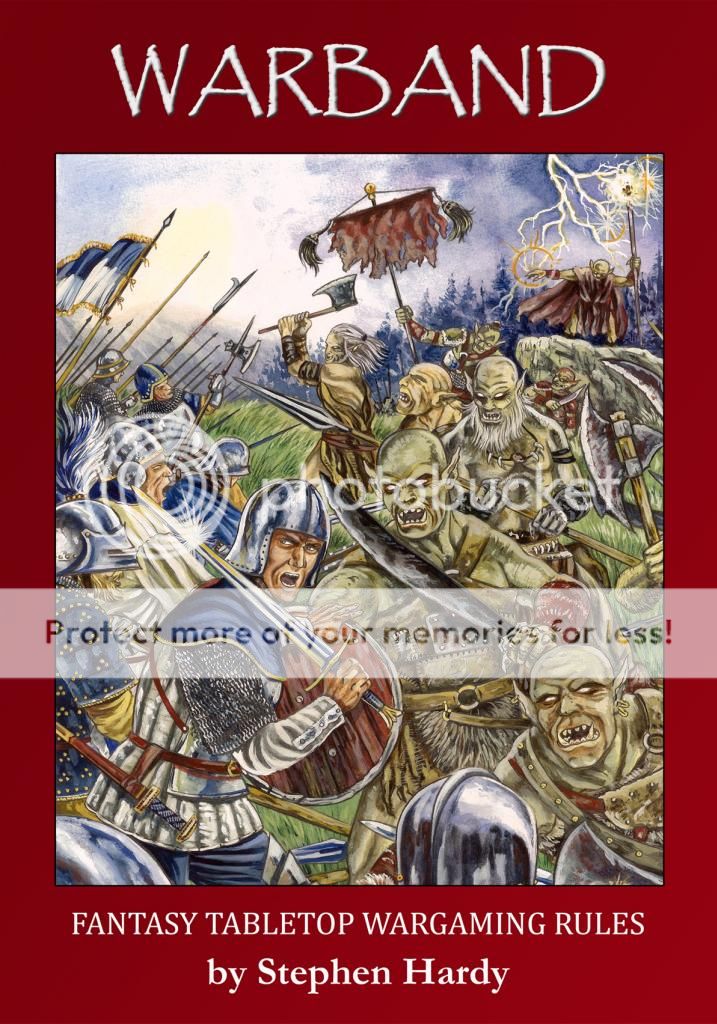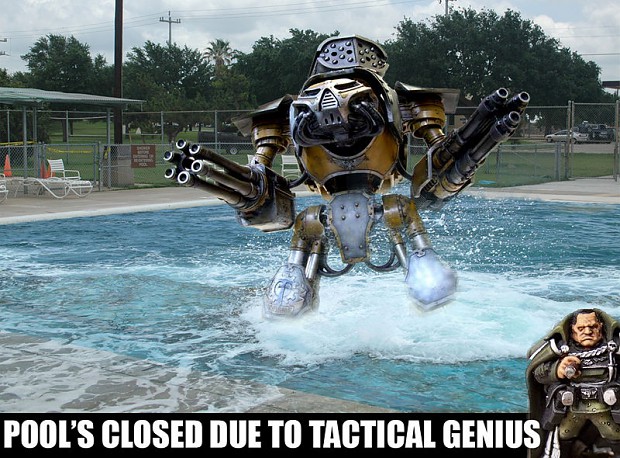
WHAT ARE THEY INTENDED FOR?
Warband is intended as a rule set
for competitive play between balanced forces, and this has influenced much of
its design. As rules for fantasy wargaming,
they are mostly freed from the need to simulate or replicate historical battle
frictions (although during play testing we played a few ‘historical’ battles
with some rather pleasing results). This
makes the rules firmly a game and this goal has been at the heart of how the
rules were developed. It meant that I
wasn't try to replicate any specific historical battle results or the ways in
which ancient armies interacted with each other. This is both a problem, in that there's no
standard to assess when I got things 'right', but also very useful and it meant
I had the flexibility to define what a 'successful design' looked like.
If the rules are played as
intended, with balanced 500 point armies in competitive ‘tournament style’ games,
players should get the best out of them.
Of course that doesn’t stop players using them for other types of play,
including narrative battles, unbalanced engagements, and so on. They should work well for these types of game
too, especially if you introduce victory objectives other than simple 'kill 'em
all'.
How this intention framed the
development of the game was simple - I was looking to ensure that everything in
the rules was balanced.
In building a force, it should be
difficult to 'math-hammer' (or min-max) the game so that you optimise a build
and gain a skewed advantage in the game.

Of course army design is still vital so a player can and should look to
make a warband they enjoy playing with and which fits their play style (whether
a cautious defensive player or wild attacking player). Players should find that while you can create
a focussed force, that will be secondary to good tactical play.
In playing during a game turn, if
you lose an advantage in one part of the turn, you should be able to gain an
advantage elsewhere. Hopefully players
will find fairly quickly that this is the case, in particular in the tensions
between movement, shooting, and melee sequences.

Of course, its also desirable to
have an element of randomness in the mix too, and trying to get the right balance
army building, tactical exploitation, and random chance is tough. There are certainly 'pinch points' in the
game where good or bad luck can throw your designs, plans and tactics into disarray. However, the spread of dice rolling across
most actions means that a player shouldn't get totally wrecked by a couple of
bad results. Without this randomness,
each battle would be predictable and rather dull.
DESIGN PRINCIPLES
The development of Warband was
guided by four principles, that they should be;
- Simple to learn
- Balanced
- Challenging to master, and
- Fun to play

The rules were also written under
the ‘if in doubt, leave it out’ premise and so most of the rules in the book
are there because during development and playtesting I found it to be something
that was necessary to make clear. Every
rule was tested by asking:
- Is it simple and intuitive?
- Does it unbalance the game?
- Does it add to the challenge of playing?
- Does it add to the fun of a game?
Rules that failed any of these
tests were either redrafted, or where found to be unnecessary, removed
entirely. Less is more I think and with
the simple application of common sense, players should find the rules flow
simply and 'as expected'.
Hopefully there shouldn’t be
anything too convoluted or complex in the rules, although to ensure the game
plays properly, there is no doubt some wording that sneaked through the ‘keep it
simple’ net.

So, something the players won't
find in the rules is anything devastatingly innovative. I've found that many rule sets that try to do
this, just feel a bit...well...gimmicky. I've
tried not to reinvent the wheel but instead to refine, hone, and make intuitive, what I think needs to happen in a set of rules for a game to work well. After all, all wargame rules have to do the
same basic things:
- Command and control
- Movement
- Shooting
- Fighting
- Morale
In my view, these basics should
happen without too much thought on the part of the players, or you end up
'playing the rules' rather than 'playing the game'.

I don't want Warband players to have to stop
their excellent strategems and tactics to trawl through arcane rules on how to
determine the morale of their troops.
Hopefully I've achieved that.
CORE MECHANIC
Therefore, core mechanic is kept
as simple as possible, mostly to get it out of the way of playing. A common characteristic of many rules is that
different elements of the game use different rules principles to achieve their
results. This means you have to remember
which rules you need at each stage.
Warband uses a very simple core
‘engine’ that is the same for all task resolutions across the game. Movement, shooting, melee, and protection is
handled in the same way, which means that once you learn this, and the small
number of conditional modifiers, it stops getting in the way of you playing the
game and lets you concentrate on trying to beat your opponent. After all, that's where the fun is, isn't it?
Warband’s task resolution is all
done using ‘dice pools’, i.e. a variable number of six-sided dice. These dice are rolled against a fixed ‘target
number’ which means all you need to do is assess the number of dice you roll
and pick out the 4, 5, and 6 results to determine how successful you have been.

Why use this method? Well, the maths, calculations, and
considerations are therefore simple and linear.
This makes the game accessible to players of all ages without bogging
them down in complexity.
Also, a units' basic ‘dice pools’
are matched to its points cost which keeps the game balanced. Powerful units cost more and are therefore
rarer on the battlefield. This inherent
balance is affected by two main processes; conditional modifiers, and commander’s
influence.
Conditional modifiers come from a
player's ability to plan and manoeuvre their units to gain tactical advantages
(such as flank attacks) and they reward good play by weighting the dice balance
in that player's favour. There's also an
element of tying this into how a player structures their army and places
terrain at the start of the battle. A
well structured wood elf army, with well deployed woodland terrain will give
the player inherent advantages, especially if that player then plays a
tactically sound game. Of course the
opponent will be trying to do the same!

A warband commander’s influence
comes from the variable ‘command points’ ability which allows the player to
decide where in the battle they want to further weight the dice balance. A commander's influence at the right point
can change the battle completely. That
said, players will probably find that most games will pass through three
stages, and using a commander well at each stage is vital. What these stages are and how to use the
commander...well figuring that out will be all part of the fun!
Thus the core mechanic provides
the player with a simple and readily understandable set of probabilities that
will help fight a challenging battle and play a fun game. Of course as we’re dealing with dice, those probabilities
will always be subject to the tyranny of randomness! This is also designed into the game, as
wherever possible we’ve tried to make each action or decision uncertain. You can never be quite sure your troops will
move where you want them to, or fight quite as well as you expect, or stand
instead of running, and that means you’ll face constant tactical challenges
throughout the game.
Around this core mechanic, the
remaining rules are kept as simple as possible.
Where there is necessary complexity, I've tried to lay out the rules
into clear and linear sequences. Follow
these and what seems difficult should become simple, and this lets you get on
with having fun playing the game.

No comments:
Post a Comment